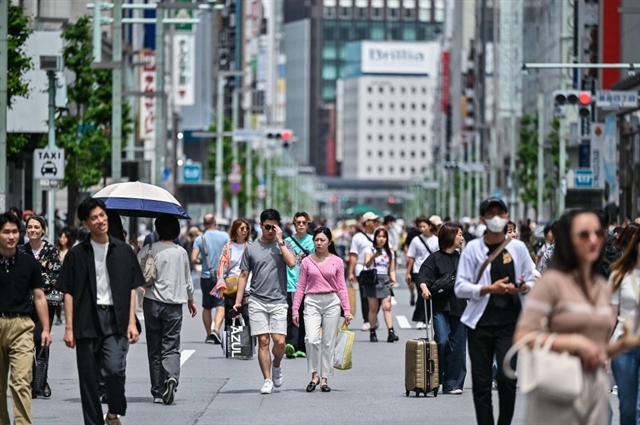 World
World

SINGAPORE — Singaporean Prime Minister Lawrence Wong has broken ground on Changi Airport Terminal 5 (T5), an expansion project more than a decade in the making that will position the airport to ride an expected surge in air travel within the Asia-Pacific and beyond.
With the Wednesday's ground-breaking, work on the mega terminal has begun, several years after the project was paused owing to the COVID-19 pandemic.
National carrier Singapore Airlines (SIA) and its budget arm Scoot will consolidate their operations under one roof at T5 when the terminal opens in the mid-2030s, said operator Changi Airport Group (CAG).
The airlines now operate across Terminals 1, 2 and 3, and SIA Group said the consolidation at T5 will provide space for its future growth and improve “operational synergies”. There will be room at T5 and other terminals for other carriers to expand their operations, CAG added.
Designed to handle about 50 million passengers a year, T5 will effectively double the size of Changi Airport and allow it to handle 140 million passengers yearly – boosting its current capacity of 90 million by more than 55 per cent.
Passenger traffic in the Asia-Pacific – already the world’s largest air travel market, taking about a third of the global share – is projected to double in the 2040s.
CAG said the extra capacity at T5 will enable Singapore to take advantage of this growth.
Construction will intensify in the next few years and peak around 2029, said Ong Chee Chiau, CAG’s managing director for Changi East. Works completed so far include a new runway, the airport’s third; an underpass for vehicular traffic; and tunnels for baggage and automated people mover systems similar to the Skytrain.
With three runways operational by the time T5 opens, a second control tower will be built to manage air traffic, Ong said.
T5 is located within the 1,080ha Changi East development, which is almost as big as the land area of today’s Changi Airport, Ong said.
 |
| A model of Changi Airport Terminal 5 seen ahead of the ground-breaking ceremony on May 14. — THE STRAITS TIMES/ANN Photo Jason Quah |
Plans for the development of Changi East, T5 and a three-runway system were announced in 2013, with land preparation works and planning for T5 starting the following year.
The Changi Airport Development Fund was started in 2015 to support the expansion of the airport and construction of T5. So far, the Government has deposited $11 billion into the fund.
The pandemic forced a two-year pause on the T5 project from 2020 to 2022, when the terminal’s design was unveiled as one allowing it to be run as smaller sub-terminals when needed. This means there will be spaces that can be converted into quarantine or testing facilities during pandemics.
Changi Airport handled a record 68.4 million passengers for the year ended March 31, 2025. It now links Singapore directly to about 170 cities globally, with nearly 100 airlines operating more than 7,200 flights weekly.
The airport is the fourth-busiest international air hub in the world. In 2024, three of the 10 busiest international flight routes originated or ended in Singapore, and six of the 10 busiest international routes in South-east Asia took off or landed in Singapore. — THE STRAITS TIMES/ANN